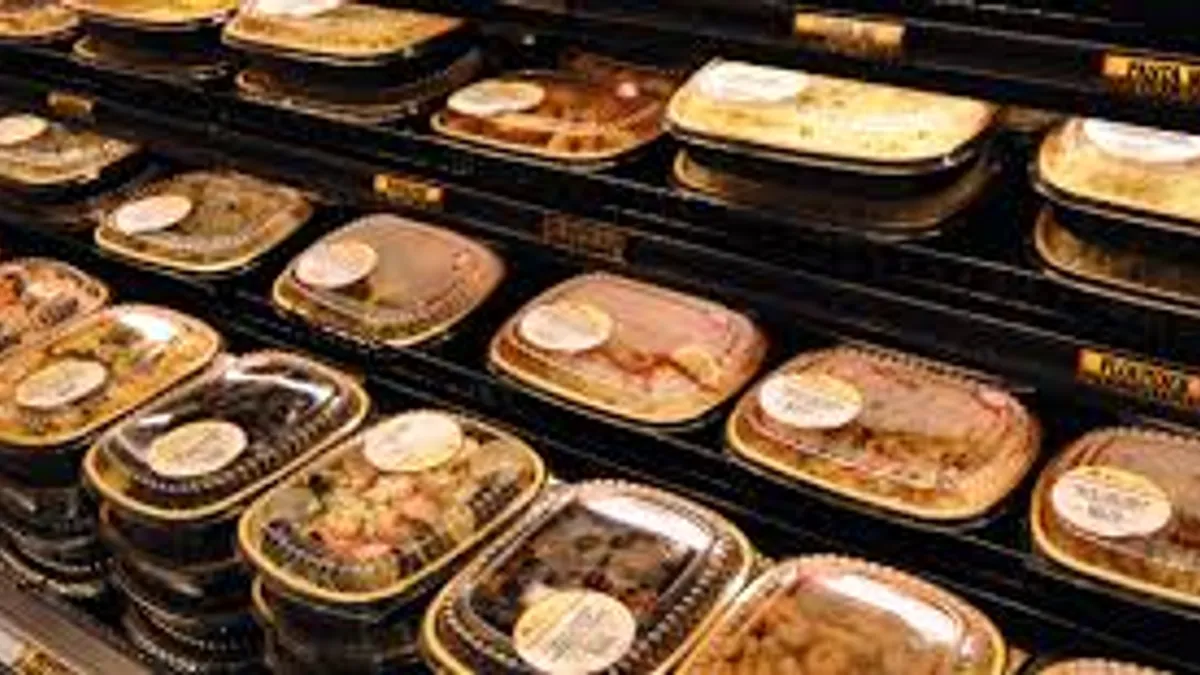Dive Brief:
- A new study, “Future of Dinner” by The NPD Group shows that dinner has evolved to meet consumers’ changing lifestyles. Consumers plan, shop and cook in different ways than they used to and nearly half of them (49%) don’t know what they're having for dinner on any given night.
- Retailers are echoing this research. Paul White, vice president at Lucky's Market, told Supermarket News that modern shoppers are more impulsive, adventurous and they seek more inspiration.
- While many consumers haven’t planned for their next dinner, that doesn't mean they are shying away from the meal. Conversely, Americans ate nearly 100 billion meals last year, and most of were at home, "just like it used to be," the study says. A big difference is often the ingredients aren't bought and the meal isn't made like they used to be.
Dive Insight:
Millennials are particularly interested in this "new American dinner" focused on meal simplification, indicating that this trend has staying power. They have less disposable income than older generations, so they rely on restaurants less, which provides grocers with a significant opportunity to meet their needs.
However, as consumers increasingly seek solutions, one potential disadvantage for grocers versus restaurants is the convenience factor, particularly as it relates to quick in-and-out (e.g., no drive-thru option) or ubiquity. For example, Kroger, the largest U.S. grocery chain, has about 2,770 locations, while McDonald’s has more than 14,000 locations. Right now, many consumers are dismissive of this advantage, choosing instead to stay at home and eat prepared meals, but restaurants are enticing these consumers by experimenting with their own meal kits and by increasing their delivery services. Competition over this “new American dinner” crowd is only likely to intensify as consumers continue to seek out speed and convenience.
Grocers have some work to do in communicating to consumers that they’re an ideal solution to the spontaneous dinner puzzle. According to the Food Marketing Institute's "The Power of Foodservice at Retail 2018 Part 2" report, just 15% of consumers frequently think of retail foodservice when they are unsure of what's for dinner. FMI indicates that consumers are most likely to learn about retail foodservice selections at the store.
To better compete for these consumers, marketing dollars should be invested to promote grocers as a logical and convenient dinner provider, primarily focusing on their ready-to-eat offerings and meal kit options, which are of particular interest to the busy millennial. Grocers can also step up their prepared food game in general — offering a variety of easy take-and-go options such as pizza, salad bars, sushi and soups that can compete against full-service restaurants nearby. Grocers can also differentiate from restaurants by leveraging their entire store experience, offering suggested recipes, side suggestions or wine and beverage pairings.
Since grocery stores typically don’t have drive-thrus, retailers could perhaps keep up with this channel by offering order-ahead and curbside pickup for their prepared food offerings. Grocerants, such as those at Hy-Vee and Kroger, can also leverage in-store ingredients with made-to-order meals, or offer in-store dining spaces to compete for the dinner dollar.
Perhaps the most significant opportunity for grocers to win the dinner consumer is price. More consumers are choosing to eat at home because they prefer to spend money on other things like housing and entertainment. Grocers are wise to promote their value, which reassures consumers are getting more bang for their buck with offerings that are diverse and flavorful. As foodservice lines continue to blur, it’ll take every advantage imaginable to compete for the busy consumer.












